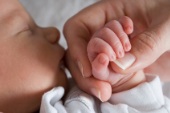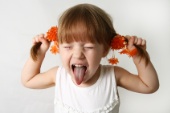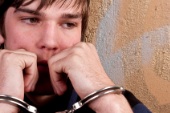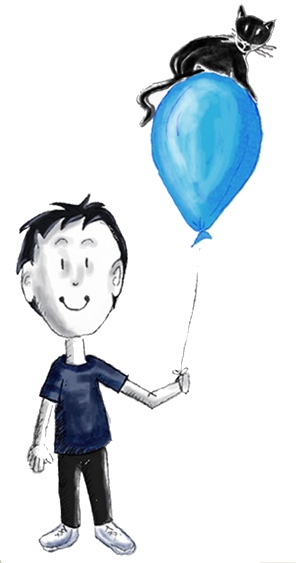

Every child of the human species is born with an innate ability to adapt to his world
From the moment of birth, every child instantly begins to learn to adapt to his environment. Even children born with non-typical brains learn, to some degree, to adapt to their world. If an infinat is exposed to trauma or stress, she constantly searches for behaviors that will get her needs met. If screaming and crying will get her needs met, she will scream and cry. If being silent and sullen will bring food and a clean diaper, he will be silent and sullen. Even kids with serious cognitive difficulties will mold their behavior to meet basic needs. Children do what works. It's really pretty simple. Children will do whatever gains them something.

Up to the age of about 26 months, the child is learning whether the world is a predictable and safe place that he can trust.
For the first two (or so) years of life, children experience their first glimpses of the world and what it is like. Typical children experience a world in which the primary parent or parent responds to their needs, changes their diaper, feeds them when they are hungry, loves them and cuddles with them and protects them from all harm. Children who experience the world that way for the first few years tend to grow up believing that the world is basically a safe place.
Children who develop behavioral disturbances tend to have experienced their first few years as chaotic, unsafe and unpredictable. Whether because of early childhood trauma, exposure to domestic violence, disrupted parenting, absent or inconsistent care providers, or innate biological impairments (such as autism, which inhibits the infant's ability to experience even the best parenting) or some other innate problem, some children experience the first few years as unsafe or unpredictable. Even in the face of the world's best parenting, some children respond to their subjective experience with terribly difficult behaviors.
At about 26 to 30 months old, these children have developed a certain view of the world, a view that either leads them to being well-adjusted toddlers or a view that leads them on a path to future major behavioral problems. It's because they adapt their behaviors to their internal experience of the world. If they believe the world is safe, they will behave accordingly. If they believe the world is unsafe, they will become demanding, manipulative, aggressive . . . they will do whatever they believe it takes to have their needs met.

The toddler who is unable to experience her world as safe develops further behavior problems
At somewhere around 26 to 30 months, the toddler quickly gains new skills and abilities. These skills and abilities are founded upon their basic belief and experience system. Kids who can't, for whatever reason, experience their world as safe, quickly gain momentum in developing even more negative behaviors. Those behaviors are their brain's effort to adapt. Sometmes, those efforts are misdirected or inappropriate to their circumstances, while sometimes they fit the circumstances. In either case, though, the child's own internal experience drives their efforts to adapt to their life, family and world.
Some kids become helpless, some become overly dramatic, some become demanding and manipulative. And they quickly learn all sorts of new behaviors that, internally, help them to cope with their internal experience. For kids with autism spectrum disorders, for example, the internal experience may be very different than the external realities, much to the frustration of their parents. Kids who experienced trauma learn to be fearful and develop behaviors that will help them to distance from the fears. There are as many different behavioral responses as there are children. In every case, however, the behaviors are the brain's attempt to adapt to the environment.

Behaviors that start out as emotional states tend to develop into emotional traits.
When the child tries on different behaviors, they tend to be momentary emotional states. The ones that the child experiences as working (i.e. got the child something he desired) tend to be repeated, gradually becoming personality traits that become burned into the basic persona of the child. In fact, these reactive behaviors become supported by neurological development that literally hard wires them into the brain. As the child ages, the brain's neurology goes from a gelatin-like state to a "hard-wired" state. Negative behaviors burn themselves into the brain and become part of the hard-wired neural system. Thus, the maladaptive behaviors become more fixed and more difficult to change. These behaviors become personality traits rather than emotional states.

Personality traits mold the developing child's behaviors
At this point, the child becomes more and more difficult, or more and more withdrawn. She approaches her world expecting that she will be hurt, victimized or neglected. The developing negative behaviors increase, leaving families increasingly frustrated and helpless. The child continues to misinterpret cues and limits from parents, care providers, teachers, and acting out behaviors get worse, even while they burn themselves further into the child's neurological system. All the while, the brain is increasing its attempt to solidify these negative behaviors because it believes they are necessary for the child's survival. The brain is becomes a runaway train, adding more negative behaviors and perceptions. It becomes harder and harder to stop the train, all in an effort to adapt. Often, the childhood years become increasingly difficult.

By the child's teen years, the child becomes more able to assert his maladaptive behaviors in stronger ways.
With 10 or 12 years of experience under their belts, kids are becoming physically more capable and more able to act out in increasingly serious and concerning ways. Some kids hurt themselves, their pets, their friends and siblings. Some kids act out in school, while some become aggressive, violent, more oppositional, and even less responsive to rules, limits and consequences. Some kids seem simply not to care about anything much. They may become withdrawn, isolated, angry, violent . . . As their neurology continues to develop, the behaviors tend to get worse as their ability to reject intervention by parents and caregivers increases..
No Broken Kidssm may offer some help to the families and care providers of these kids. There are no guarantees, and no miracles. But there is hope. No Broken Kidssm is for the parents, foster parents, teachers and care providers of these kids. If you are equipped with a sincere commitment to changing your child's behaviors (which will require that you change many of the ways you deal with your child) then our program may be for you.
